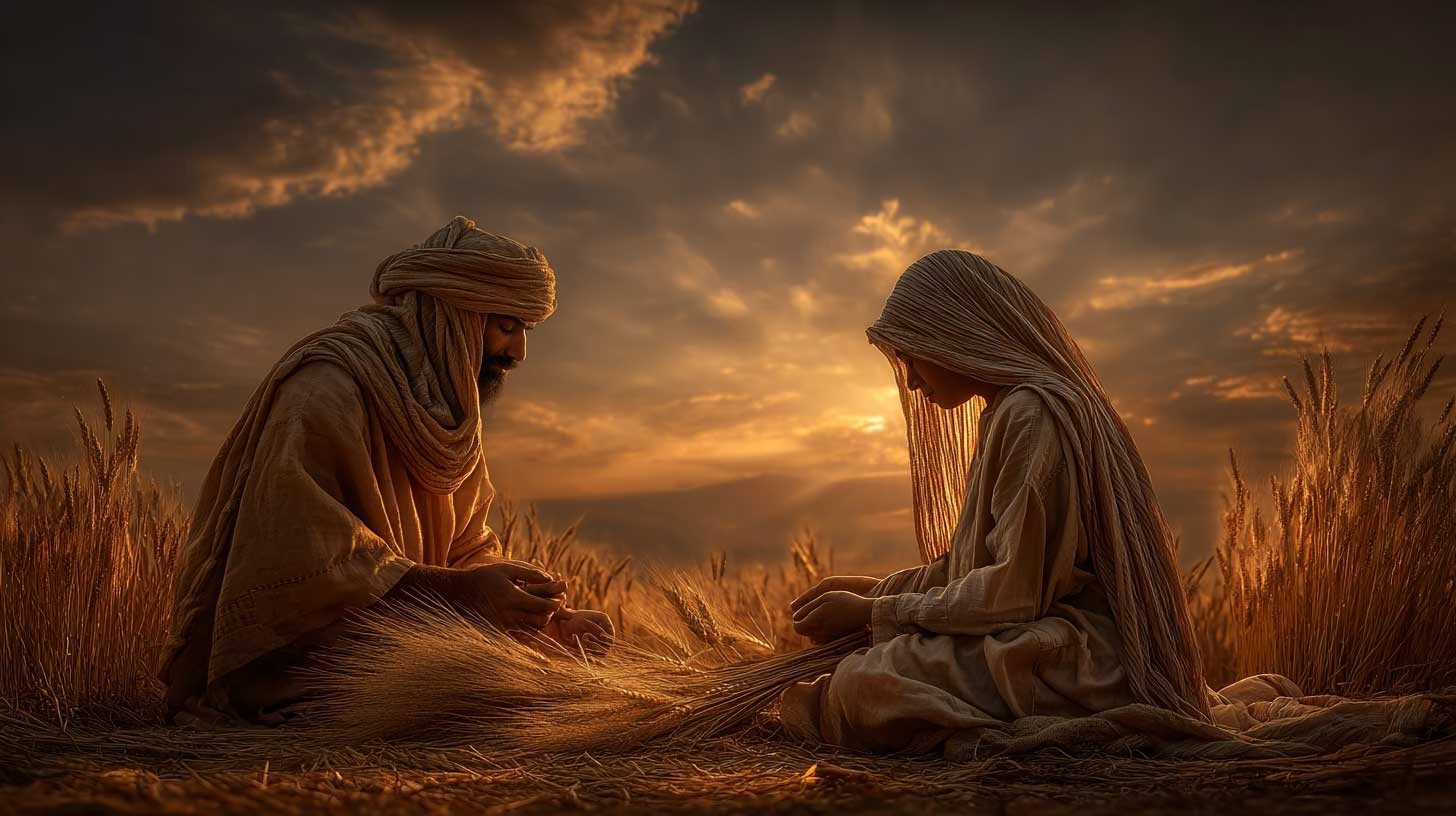
The Book of Ruth Chapter 3 presents one of Scripture’s most powerful examples of faith in action. In this pivotal chapter, Ruth courageously approaches Boaz at the threshing floor, setting the stage for the kinsman-redeemer story. Her obedience reveals how God works through our faithful steps, even when His plan remains hidden from view.
Table of Contents
Why Did Naomi Send Ruth to Boaz in Chapter 3?
Naomi sent Ruth to Boaz at the threshing floor because she recognized him as a potential kinsman-redeemer. In Israelite law, this role could provide Ruth with protection, security, and a family future. Naomi’s bold plan shows both her trust in God’s providence and her desire to secure Ruth’s well-being.
What motivated Naomi to devise her bold plan for Ruth’s future?
Naomi’s plan emerges from both desperation and wisdom, recognizing that Ruth needs permanent security rather than continuing as a gleaner. She understands the kinsman-redeemer laws of Israel and sees an opportunity through Boaz’s obvious kindness and their family connection through Elimelech.
In the opening verses of the Book of Ruth Chapter 3, we witness a mother-in-law’s deep concern transform into decisive action.
“Then Naomi her mother-in-law said to her, ‘My daughter, shall I not seek security for you, that it may be well with you?’” (Ruth 3:1).
This question reveals Naomi’s shift from bitterness to hope, a transformation that began when Ruth returned with an unexpected abundance of barley from Boaz’s field.
The Hebrew word for “security” here is manoach, meaning a place of rest or settlement. Naomi recognizes that Ruth’s current situation—gleaning in fields as a foreign widow—offers no long-term stability. In ancient Israel, widows without assets faced limited options, often reduced to begging or worse. Through our comprehensive study of biblical wisdom in the Bible Messages series, we see how God’s law provided protection for society’s most vulnerable members through institutions like the kinsman-redeemer.
Naomi’s maternal love drives her to action despite the risks involved. She knows the threshing floor celebration could be dangerous for a young woman, especially a Moabite. The harvest festivals often included excessive drinking and potential moral compromise. Yet she trusts both in Boaz’s character and in God’s providence working through human choices.
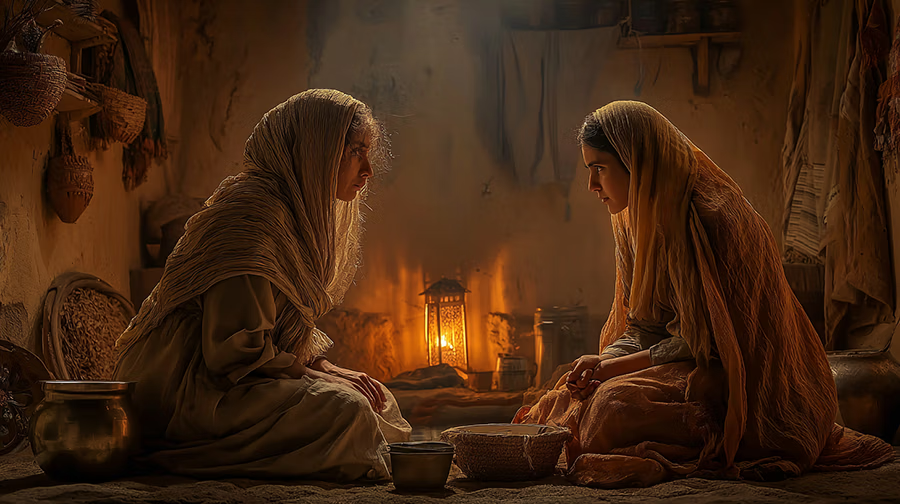
What Was the Threshing Floor in the Book of Ruth?
The threshing floor was a central place in ancient Israel where harvested grain was separated from chaff. It also carried symbolic meaning, representing separation between the righteous and the wicked. In Ruth Chapter 3, this setting becomes the backdrop for Ruth’s bold act of faith and God’s redemptive plan.
The threshing floor held significant cultural and spiritual meaning in ancient Israel. Located on elevated ground to catch the wind, these communal spaces served as centers for both agricultural processing and social celebration. During harvest time, owners would sleep near their grain to protect it from thieves, making Boaz’s presence there expected rather than unusual.
The winnowing process itself carried symbolic weight throughout Scripture. Just as the wind separated wheat from chaff, God separates the righteous from the wicked. This imagery appears frequently in both Old and New Testaments, making the threshing floor a powerful setting for Ruth’s act of faith. When studying the deeper meanings in Scripture through resources like our Books of the Bible guide, we discover how physical locations often represent spiritual truths.
Ruth’s Bold Faith: Lessons from Ruth Chapter 3
Ruth’s obedience in Chapter 3 shows faith that is immediate and complete. She followed Naomi’s risky instructions without hesitation, demonstrating trust in both her mentor and God’s plan. Her courage models the kind of faithful submission that believers are called to—acting in trust even when outcomes remain uncertain.
How does Ruth demonstrate perfect submission to God’s will?
Ruth’s response to Naomi’s instructions shows complete trust without questioning, declaring:
“All that you say to me I will do” (Ruth 3:5).
This mirrors Mary’s response to the angel Gabriel and exemplifies the kind of faith that moves mountains through simple obedience.
The Book of Ruth Chapter 3 presents Ruth’s obedience as both immediate and complete. She doesn’t question the propriety of approaching a man at night, doesn’t express fear about potential rejection, and doesn’t negotiate for a different plan. Her response echoes throughout Scripture as the model of faithful submission:
“All that you say to me I will do” (Ruth 3:5).
This level of trust requires understanding the enormous risks Ruth faced. As a Moabite widow, she already occupied the lowest social position in Israelite society. Any scandal could destroy her completely. Yet she demonstrates the kind of faith that our modern culture desperately needs—faith that acts despite uncertainty, trusting that God works through our obedience even when we cannot see the outcome.
Ruth’s preparation reveals both reverence and hope. She washes, anoints herself with oil, and puts on her best garments—not to seduce, but to present herself as a woman ready for marriage and new beginnings. This careful preparation parallels how believers should approach God’s throne, as we explore in our study on approaching God through The 4-3 Formula for spiritual growth.
What Happened at the Threshing Floor at Midnight?
At midnight, Boaz awoke to find Ruth lying at his feet, a respectful gesture requesting redemption under the kinsman-redeemer law. Instead of responding with suspicion or anger, Boaz showed kindness and integrity. This encounter marked a turning point, where faith, risk, and God’s providence aligned in a powerful way.
The dramatic moment at midnight transforms a seemingly ordinary harvest celebration into a divinely orchestrated appointment.
“Now it happened at midnight that the man was startled, and turned himself; and there, a woman was lying at his feet” (Ruth 3:8).
Boaz’s startled response is entirely natural—waking to find someone at his feet would alarm anyone.
Yet notice his first question: “Who are you?” Not “What are you doing here?” or “How dare you?” His measured response reveals a man of remarkable self-control and wisdom. When Ruth identifies herself and makes her bold request—”Take your maidservant under your wing, for you are a close relative”—she uses language that recalls Boaz’s earlier blessing about finding refuge under God’s wings.
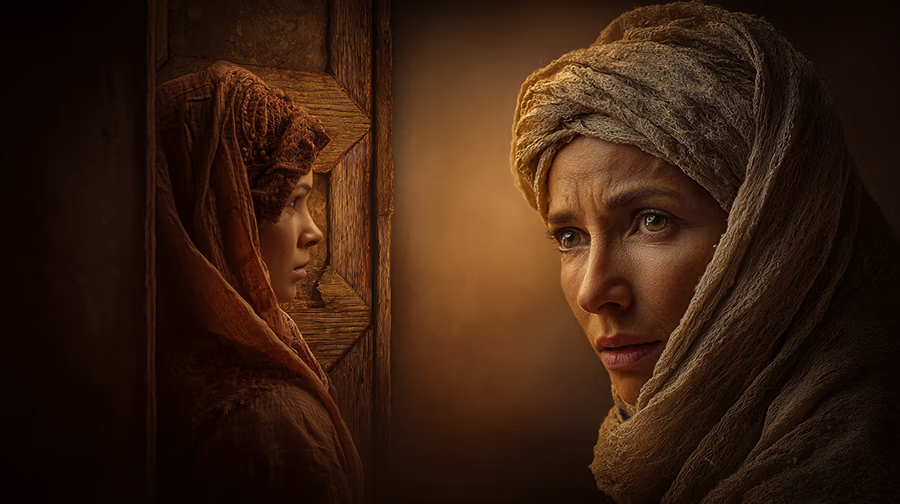
The Hebrew word Ruth uses here, kanaph, means both “wing” and “corner of a garment.” She’s making both a practical request for marriage and a spiritual declaration of seeking protection under the covenant community of Israel. This beautiful wordplay demonstrates how physical and spiritual realities intertwine in God’s redemptive plan.

Boaz in Ruth 3: A Man of Integrity and Christ-Like Character
Boaz demonstrated integrity by protecting Ruth’s reputation, honoring the law, and committing to redemption. He placed righteousness above emotion and desire, showing patience and respect. His actions in Ruth Chapter 3 foreshadow Christ, the ultimate Redeemer, who likewise acted with sacrificial love, lawful righteousness, and unwavering commitment to God’s will.
What qualities make Boaz a type of Christ in Scripture?
Boaz demonstrates Christ-like character through his protection of Ruth’s reputation, his adherence to God’s law above personal desire, and his willing acceptance of the kinsman-redeemer role. His actions preview how Christ would redeem humanity through perfect obedience and sacrificial love.
The Book of Ruth Chapter 3 showcases Boaz as a man whose integrity surpasses his emotions. Despite his obvious affection for Ruth—evident in his exclamation:
“Blessed are you of the Lord, my daughter!”
—he immediately acknowledges the legal complication:
“Now it is true that I am a close relative; however, there is a relative closer than I” (Ruth 3:12).
This response reveals several crucial character traits that make Boaz a type of Christ in Scripture:
- Lawful righteousness – He respects God’s established order even when it might cost him personally
- Protective love – He immediately takes steps to guard Ruth’s reputation
- Generous provision – He sends her home with six ephahs of barley
- Redemptive purpose – He commits to securing her future regardless of personal cost
Boaz’s age, mentioned as significantly older than Ruth, adds another dimension to this narrative. Jewish traditions suggest he was around eighty years old, making Ruth’s choice even more remarkable. She chose character over appearance, security in godliness over worldly attraction. This principle remains vital for believers today, as discussed in our examination of Today’s Concerns facing Christian families.
What Is the Meaning of the Six Measures of Barley in Ruth 3
The six measures of barley Boaz gave Ruth symbolized incompleteness—one short of the perfect number seven. This gift was a coded message to Naomi that Boaz would not rest until the matter of redemption was resolved. It showed provision, commitment, and a promise that God’s plan was still unfolding.
The six ephahs of barley Boaz sends with Ruth carry profound symbolic meaning beyond mere provision. In Hebrew culture, six represents incompleteness—one short of seven, the number of perfection and rest. Through this gift, Boaz communicates to Naomi that he will work to complete this matter, bringing rest to them all.
This coded message between Boaz and Naomi demonstrates the sophisticated understanding these biblical figures possessed. When Naomi sees the six ephahs, she immediately understands:
“Sit still, my daughter, until you know how the matter will turn out; for the man will not rest until he has concluded the matter this day” (Ruth 3:18).
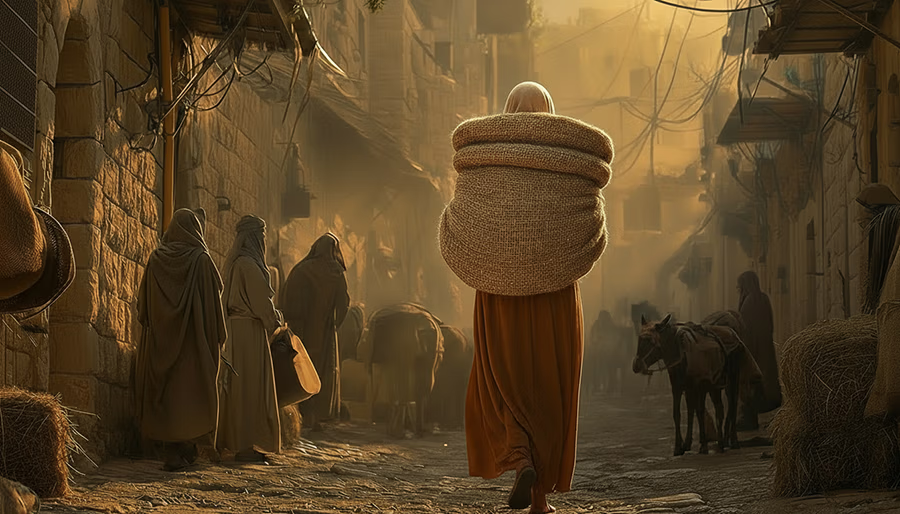
The progression of barley gifts throughout the Book of Ruth—from gleaning handfuls to receiving ephahs—illustrates how God’s blessings multiply when we walk in obedience. This principle of increasing blessing through faithfulness appears throughout Scripture and remains relevant for believers navigating modern challenges, as we explore in God’s Providence in Esther 2.
What Is a Kinsman Redeemer in the Bible?
A kinsman-redeemer was a close relative in ancient Israel who had the duty to redeem family property, protect widows, and preserve family lineage. In Ruth 3, Boaz represents this role by offering security to Ruth. The concept points directly to Christ, who redeems believers through His sacrificial love and obedience.
How does the kinsman-redeemer system point to Christ’s redemption?
The kinsman-redeemer system in ancient Israel provides a perfect picture of Christ’s redemptive work, requiring a near relative who is both willing and able to pay the redemption price. This system protected the vulnerable while preserving family inheritance and name.
The Hebrew term go’el (kinsman-redeemer) appears throughout the Book of Ruth Chapter 3, carrying legal, social, and spiritual significance. This role required three qualifications: blood relationship, financial ability, and personal willingness. The kinsman-redeemer would purchase back family land sold in poverty and marry the widow to preserve the family line.
This divine institution served multiple purposes in Israelite society:
- Preservation of family inheritance within tribal boundaries
- Protection of vulnerable widows from destitution
- Continuation of family names through levirate marriage
- Demonstration of covenant loyalty within the community
The parallel to Christ’s redemptive work becomes unmistakable. Jesus Christ, our Kinsman-Redeemer, became flesh to be our near relative, possessed the infinite resources needed for our redemption, and willingly paid the price through His death on the cross. This theological truth, woven throughout the Faith and Providence lessons from Ruth Chapter 1, shows how God embedded the Gospel message in Old Testament narratives.
Who Was the Nearer Kinsman in Ruth 3?
The nearer kinsman was a relative closer to Ruth than Boaz, and according to Israelite law, he had the first right of redemption. His presence created tension in Ruth Chapter 3, reminding readers that God’s providence often works through delays and obstacles. Ultimately, his refusal opened the way for Boaz’s redemption.
The existence of a nearer kinsman introduces divine tension into the narrative. This unnamed relative represents the law without love, duty without desire. His presence forces both Boaz and Ruth to submit their hopes to God’s sovereign will, demonstrating faith that transcends personal preference.
This situation parallels many believers’ experiences when God’s plan seems blocked by circumstances. Like Ruth waiting through the night and then waiting at home for news, we often must rest in uncertainty while God works behind the scenes. The nearer kinsman’s eventual refusal (revealed in Chapter 4) demonstrates how God can use even rejection to accomplish His purposes.

Faith and Patience: Key Lessons from Ruth Chapter 3
Ruth Chapter 3 teaches that faith requires both bold action and patient waiting. Ruth acted by approaching Boaz, but then had to wait for him to resolve the matter legally. This balance of obedience and trust shows believers how to follow God faithfully even when outcomes remain beyond their control.
What can modern believers learn from Ruth’s patient faith?
Ruth’s example teaches believers to combine bold action with patient waiting, to trust godly counsel while maintaining personal integrity, and to believe God works through ordinary circumstances to accomplish extraordinary purposes in our lives.
The Book of Ruth Chapter 3 masterfully balances action and waiting, two aspects of faith that often seem contradictory. Ruth acts boldly by going to the threshing floor, then waits quietly for Boaz to respond. She returns home and waits again while Boaz handles legal matters. This rhythm of acting and waiting characterizes mature faith.
Naomi’s final instruction—”Sit still, my daughter”—might be the hardest command in Scripture to obey. In our instant-gratification culture, waiting feels like wasted time. Yet Scripture consistently shows that God’s delays are not denials. As we examine in our series on Proverbs, wisdom often requires patience to see God’s perfect timing unfold.
The waiting period between chapters 3 and 4 represents a crucial test of faith. Ruth must trust that:
- Boaz will keep his word
- God will work through the legal system
- Her obedience will bear fruit
- Naomi’s wisdom proves reliable
These same trust challenges face believers today as we navigate uncertain circumstances while holding onto God’s promises.
George Washington’s Prayer: A Historical Parallel
How does Washington’s prayer journal connect to Ruth’s story?
Washington’s humble prayer, acknowledging his failures while trusting in God’s mercy, mirrors the humble faith demonstrated in the Book of Ruth Chapter 3. Both show how God uses imperfect people who submit to His will to accomplish His purposes in history.
The transcript includes a powerful prayer from George Washington’s journal that remarkably parallels themes in the Book of Ruth Chapter 3. Washington writes: “I acknowledge and confess my guilt in the weak and imperfect performance of the duties of this day… remember that I am but dust and remit my transgressions.”
This prayer demonstrates the same humble dependency on God that Ruth showed at the threshing floor. Both Washington and Ruth understood their inadequacy apart from divine grace. Both placed their futures entirely in God’s hands. Both acted with courage while acknowledging their need for mercy.
Washington’s statement that “it is impossible to rightly govern a nation without God and the Bible” reflects the truth embedded in Ruth’s story—that godly leadership requires submission to divine authority. As explored in our 647 – Truth Starts Now series, America’s founding fathers understood this principle that modern society increasingly forgets.
From Washington’s prayer journal, we read: “O most glorious God, in Jesus Christ my merciful and loving Father, I acknowledge and confess my guilt in the weak and imperfect performance of the duties of this day… Remember that I am but dust and remit my transgressions, negligences and ignorances, and cover them all with the absolute obedience of Thy dear Son.”

The prayer’s focus on Christ’s sacrifice as the basis for acceptance parallels the kinsman-redeemer theme. Just as Ruth needed Boaz to redeem her from widowhood and poverty, Washington recognized his need for Christ’s redemption from sin and failure. This universal need for redemption connects believers across centuries and cultures.
The Providence of Hurricane Milton: Finding God in Storms
How do physical storms teach us about spiritual steadfastness?
Physical storms like Hurricane Milton force us to confront our powerlessness and dependence on God, much like Ruth faced the storms of widowhood and displacement. These trials reveal where our true security lies—not in circumstances but in God’s unchanging character.
Pastor Chuck’s personal testimony about enduring Hurricane Milton provides a powerful modern application of Ruth’s story. Spending five hours in a dark closet while the storm raged outside created space for deep reflection on God’s sovereignty. The hurricane’s fury—sounding like “locomotives on all four sides”—reminded him that our problems, however severe, pale compared to God’s power.
This experience illuminates a crucial truth from the Book of Ruth Chapter 3: God often works most powerfully in our darkest moments. Ruth approached Boaz in the darkness of midnight. Washington prayed in the darkness before battle. Pastor Chuck found clarity in the darkness of a closet during the storm. These experiences teach us that darkness often precedes divine breakthrough.
The loss of power for a week following the hurricane created an enforced season of waiting, much like Ruth’s waiting after leaving the threshing floor. These periods of forced inactivity often become seasons of spiritual activity, when God speaks most clearly to our hearts. As discussed in Faith and Redemption from Ruth Chapter 2, God uses waiting seasons to prepare us for greater blessings.
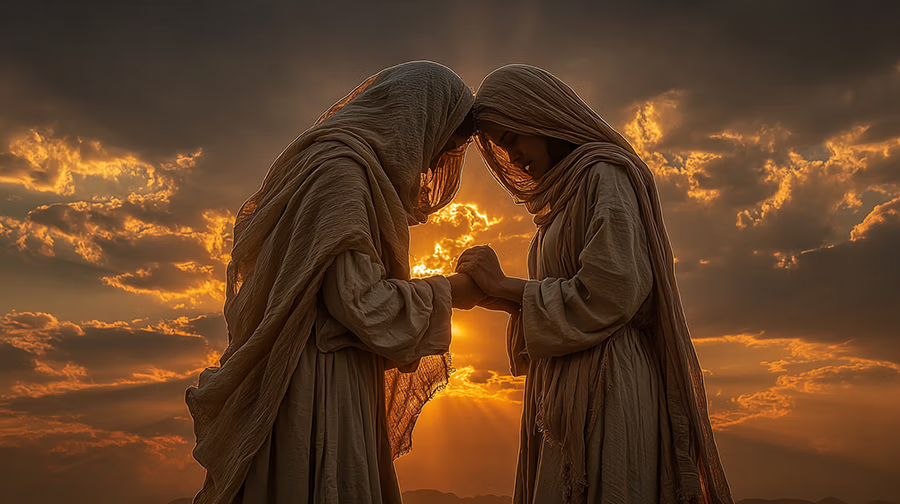
National Challenges and Biblical Solutions
What parallels exist between Ruth’s time and America today?
Both Ruth’s era and modern America face moral confusion, leadership crises, and threats to traditional values. The Book of Ruth Chapter 3 demonstrates how individual faithfulness can impact nations, showing that revival begins with personal obedience to God’s word.
Pastor Chuck’s observation that:
“our country is on the cusp of implosion”
“Satan is having a field day with our government and leadership”
echoes the period of Judges when Ruth lived—a time when:
“everyone did what was right in his own eyes” (Judges 21:25).
Yet the Book of Ruth Chapter 3 shows how individual faithfulness can shine light in dark times.
The story of Ruth provides hope for our nation because it demonstrates:
- God works through remnants – Even when society deteriorates, God preserves faithful individuals
- Righteousness influences culture – Boaz’s integrity affected his entire community
- Foreign converts can become champions of faith – Ruth the Moabitess became King David’s great-grandmother
- Small acts of obedience have generational impact – Ruth’s midnight visit led to the Davidic line
These truths offer hope for American believers concerned about national direction. As explored in our Community resources, individual believers living out biblical principles can influence their spheres regardless of broader cultural decay.
The connection between spiritual revival and national restoration appears throughout Scripture and American history. Washington’s prayers before Valley Forge, Lincoln’s calls for national days of prayer, and Reagan’s references to America as a “shining city on a hill” all recognize this truth: nations thrive when they acknowledge God.
The Command to Courage
Why does God repeatedly command “be strong and of good courage”?
God’s repeated command to be strong and courageous appears when He calls people to tasks beyond human ability. This command in the Book of Ruth Chapter 3 context reminds us that faith requires courage to act on God’s promises despite visible obstacles.
The divine command “Be strong and of good courage” appears throughout Scripture at pivotal moments of decision. Joshua heard it before entering Canaan. David heard it before facing Goliath. Ruth embodied it at the threshing floor. This repetition emphasizes that godly living requires supernatural courage.
Pastor Chuck notes that when God repeats commands, the emphasis multiplies exponentially. The threefold command—”be strong and of good courage, do not be afraid nor be dismayed”—carries the weight of thirty repetitions. This intensive emphasis indicates that fear is faith’s greatest enemy.
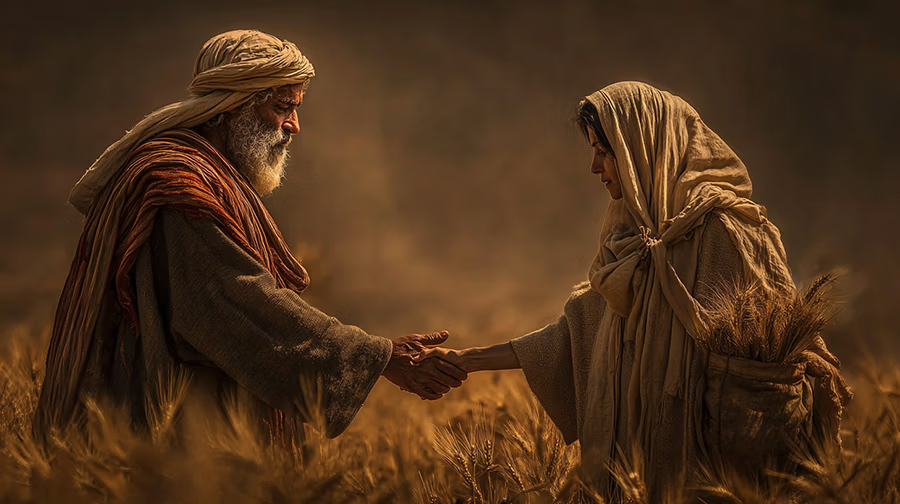
The Book of Ruth Chapter 3 illustrates four aspects of biblical courage:
- Courage to act despite uncertain outcomes
- Courage to wait when action seems urgent
- Courage to trust imperfect human instruments
- Courage to hope when circumstances seem hopeless
These same courage requirements face modern believers. Whether confronting personal trials, family crises, or national challenges, we need the same divine courage Ruth demonstrated. Our study of Five Smooth Stones explores how David’s courage came from trusting God’s faithfulness, the same source available to us today.
How Ruth Chapter 3 Connects to Jesus Christ
Ruth Chapter 3 connects to Jesus Christ through the theme of redemption. Boaz, as a willing redeemer, foreshadows Christ, who became our Kinsman-Redeemer by taking on humanity, paying the price for sin, and providing eternal rest. Ruth’s story highlights God’s sovereignty in weaving redemption through ordinary lives and lineages.
The Book of Ruth Chapter 3 forms a crucial link in the Messianic lineage, as Ruth’s union with Boaz produces Obed, grandfather of King David, establishing the royal line through which Christ would come. This demonstrates God’s sovereignty in using a Gentile woman to bring forth the Jewish Messiah.
The genealogical significance of Ruth’s story cannot be overstated. Through her union with Boaz came Obed, the father of Jesse, the father of David, establishing the royal line culminating in Jesus Christ. This Moabite woman, from a nation born of incest and excluded from Israel’s assembly, becomes a critical link in salvation history.
This divine irony reveals God’s redemptive heart. The law stated:
“An Ammonite or Moabite shall not enter the assembly of the Lord; even to the tenth generation” (Deuteronomy 23:3).
Yet God’s grace transcends human boundaries, incorporating this foreign woman into the most important genealogy in history.
The Book of Ruth Chapter 3 demonstrates several Messianic themes:
- Redemption requires a willing redeemer – Both Boaz and Christ chose to redeem
- Love motivates redemption – Not mere duty but genuine care drives both stories
- Redemption costs the redeemer – Boaz risked his inheritance; Christ gave His life
- Redemption brings rest – Ruth found security; believers find eternal rest
These parallels aren’t coincidental but divinely orchestrated to help us understand Christ’s work through Old Testament pictures. As examined in The Book of Esther, God weaves redemptive themes throughout seemingly secular historical narratives.

[Image Placement: Biblical illustration of the genealogical tree from Ruth to David to Christ, depicted as a flourishing vine with key figures highlighted]
Contemporary Applications for Christian Living
How should modern believers apply Ruth’s example today?
Modern believers can apply Ruth’s example by trusting godly mentors, taking faith-filled risks when God opens doors, maintaining moral purity while pursuing God’s will, and believing that obedience in small matters leads to greater kingdom impact.
The Book of Ruth Chapter 3 offers practical wisdom for contemporary challenges. Ruth’s story addresses modern issues like blended families, cross-cultural relationships, economic hardship, and finding purpose after loss. Her example provides a blueprint for navigating complex situations with faith and integrity.
For those facing difficult decisions, Ruth demonstrates the importance of seeking wise counsel. She trusted Naomi’s guidance even when the plan seemed risky. Modern believers benefit from spiritual mentors who provide biblical perspective on life’s challenges. This principle of submitted accountability protects us from destructive independence.
Ruth’s story also speaks to those feeling like outsiders in faith communities. As a Moabite in Israel, she faced potential rejection daily. Yet her consistent character won acceptance. This encourages believers from non-Christian backgrounds or those feeling marginalized in church settings. Your past doesn’t disqualify you from God’s purposes.
The narrative addresses contemporary dating and marriage issues. Ruth’s approach—respectful, modest, yet bold—contrasts sharply with modern dating culture. She sought a covenant relationship, not casual romance. Her story encourages believers to prioritize character over chemistry in relationships, trusting God’s timing rather than forcing outcomes.
Walking in Covenant Faithfulness
What does covenant loyalty look like in modern relationships?
Covenant loyalty in modern relationships means prioritizing commitment over feelings, serving others’ interests above our own, and maintaining faithfulness even when circumstances become difficult. Ruth exemplifies this through her unwavering dedication to Naomi and proper respect for Boaz.
The Hebrew word hesed (covenant loyalty) pervades the Book of Ruth Chapter 3, though English translations struggle to capture its full meaning. This term combines love, loyalty, kindness, and faithfulness—the glue holding relationships together through trials. Ruth embodies hesed toward Naomi, Boaz demonstrates it toward Ruth, and both reflect God’s hesed toward His people.
Modern culture desperately needs to rediscover hesed. Our relationships often operate on contractual rather than covenant principles—continuing only while both parties benefit equally. Ruth’s story challenges this consumer mentality, showing that true love serves without calculating returns.
This covenant faithfulness applies to:
- Marriage – Staying committed through difficult seasons
- Family – Caring for aging parents and struggling relatives
- Church – Remaining faithful to local congregations despite imperfections
- Friendships – Maintaining loyalty when relationships require sacrifice
The rewards of covenant faithfulness exceed its costs, as Ruth discovered. Her loyalty to Naomi led to marriage with Boaz and inclusion in the Messianic line. Our faithfulness in relationships, though costly short-term, yields eternal dividends in God’s economy. This principle resonates throughout our Mission statement, emphasizing how biblical faithfulness transforms both individual lives and nations.
The Already and Not Yet
How does Ruth’s waiting reflect the Christian experience?
Ruth’s position between promise and fulfillment—knowing Boaz will act but not knowing the outcome—mirrors the Christian life between Christ’s first and second coming. We live in the tension of having God’s promises while awaiting their complete fulfillment.
After leaving the threshing floor, Ruth enters a liminal space—no longer a mere gleaner but not yet a bride. This in-between state characterizes much of Christian experience. We’re saved but still being sanctified. We’re citizens of heaven while residing on earth. We have God’s promises but await their full manifestation.
The Book of Ruth Chapter 3 teaches us to navigate uncertainty with faith. Ruth couldn’t control the nearer kinsman’s decision. She couldn’t force the legal proceedings. She could only wait, trusting that God’s purposes would prevail through human processes.
This waiting tests our faith in several ways:
- Will God’s timing align with our expectations?
- Can we trust when we cannot trace God’s hand?
- Will we maintain integrity when shortcuts appear?
- Can we rest when everything seems uncertain?
Ruth’s example encourages believers facing prolonged waiting seasons. Whether waiting for healing, provision, relationships, or calling clarity, her story reminds us that God works while we wait. The outcome often exceeds our imagination, as Ruth discovered when her obedience led to royal lineage.

Conclusion: Living the Ruth Chapter 3 Legacy
The Book of Ruth Chapter 3 calls believers to courageous obedience in uncertain times. Ruth’s midnight encounter at the threshing floor demonstrates that faith sometimes requires bold action despite risk. Her story encourages us to trust God’s providence working through ordinary circumstances and faithful people.
As Pastor Chuck reflected during Hurricane Milton, our trials reveal where we place our trust. Physical storms, national upheavals, and personal crises all test whether we truly believe God controls outcomes. Ruth’s example shows that submitting to God’s will while taking appropriate action leads to blessings beyond imagination.
The chapter’s message resonates powerfully for American Christians concerned about national direction. Like Ruth in the corrupt period of Judges, we can shine as lights in darkness through personal faithfulness. Individual obedience influences families, communities, and ultimately nations. As Washington understood, nations cannot be rightly governed without acknowledging God.
Ruth’s journey from Moabite widow to Messiah’s ancestor proves that no one is beyond God’s redemptive purpose. Your past doesn’t determine your future when you place yourself under the wings of the Almighty. The same God who orchestrated Ruth’s redemption continues working today, weaving individual stories into His grand narrative of salvation.
The command echoes across centuries: “Be strong and of good courage!” Don’t let fear paralyze faith. Don’t let circumstances obscure God’s sovereignty. Don’t let waiting weaken trust. The God who provided Ruth’s kinsman-redeemer has provided ours in Jesus Christ. Through Him, we find both present security and eternal rest.
As we await Chapter 4’s conclusion, remember Naomi’s wisdom: “Sit still…for the man will not rest until he has concluded the matter.” Our Heavenly Redeemer won’t rest until He completes the good work He began in us. Trust His timing. Obey His word. Rest in His providence. The beautiful ending God wrote for Ruth, He desires to write for all who trust Him completely.
Frequently Asked Questions (FAQs)
Why did Ruth uncover Boaz’s feet at the threshing floor?
Ruth uncovered Boaz’s feet as a symbolic act to privately request redemption under the kinsman-redeemer law. This gesture was culturally appropriate and served as a respectful marriage proposal, demonstrating both boldness and propriety.
Was Ruth’s nighttime visit to Boaz improper or immoral?
No. Ruth’s actions were honorable within Israelite culture. She approached Boaz privately at night to protect her reputation, and Boaz responded with integrity, ensuring her safety and virtue were preserved.
How does the kinsman-redeemer concept point to Jesus Christ?
The kinsman-redeemer foreshadows Christ. Just as Boaz was a willing relative who redeemed Ruth, Jesus became our near relative, paid the redemption price, and secured our eternal inheritance.
What can we learn from Naomi’s role as a spiritual mentor?
Naomi shows how godly mentors guide others through faith and wisdom. Her counsel directed Ruth to act with courage and integrity, reminding believers of the value of mentorship in discerning God’s will.
Further Reading
Classic commentaries
- Matthew Henry’s Commentary on Ruth 3 (Christianity.com) Christianity.com
- Matthew Henry on Ruth 3 (BibleGateway) Bible Gateway
- Enduring Word Commentary: Ruth 3 – “Ruth Makes an Appeal” Enduring Word
- Jamieson–Fausset–Brown on Ruth 3 (BibleHub) Bible Hub
Historical / cultural context
Kinsman-redeemer (theology & application)
- Christianity.com: “The Importance and Meaning of a Kinsman Redeemer” Christianity.com
- GotQuestions: “What is a kinsman-redeemer?” GotQuestions.org

